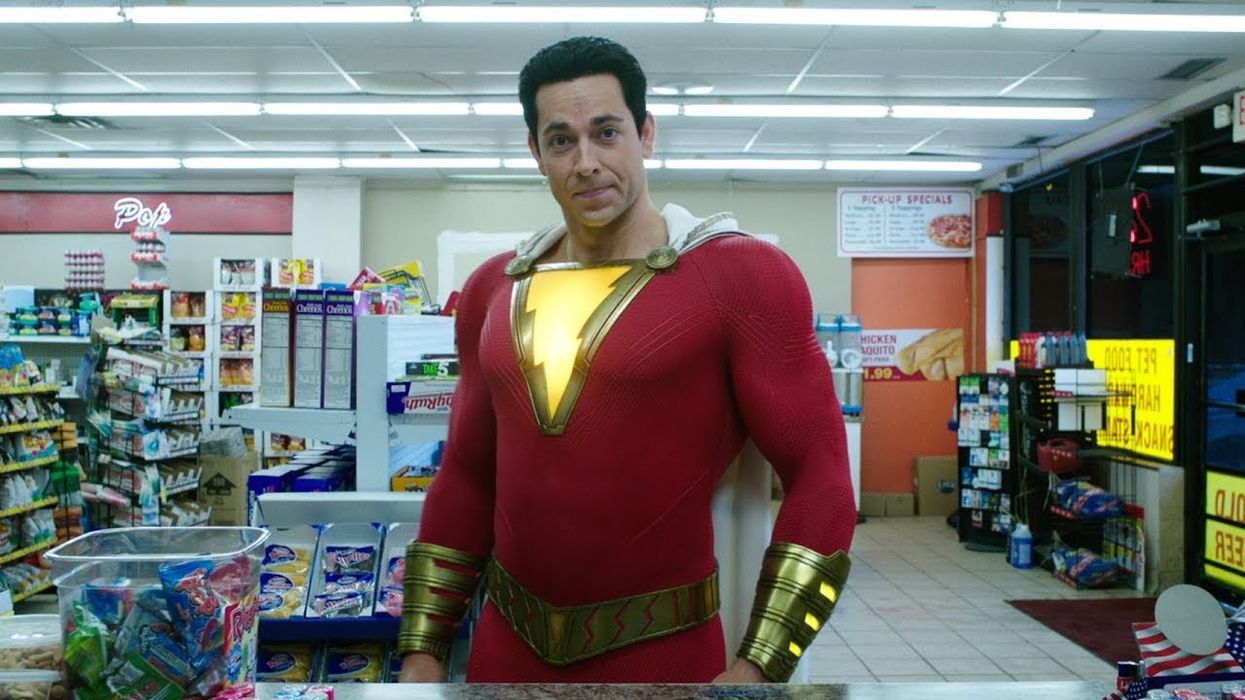3 Ways Studio Films Solve Problems On Set
A new video essay explains how 'Shazam' fixed plot holes and visual goofs.

When you see a $100M movie in theaters, you’re paying attention to the action, the story, and the characters. It’s not until you get home and turn on CinemaSins or visit the film’s IMDb trivia page that you start to notice even the slightest detail out of place. Don’t believe me? Okay, show of hands: how many of you caught Khaleesi’s water bottle on first viewing?
The director doesn’t have the luxury of ignoring minor flaws. It’s their job to make the final product as close to perfect as possible using any means necessary. Sometimes, that requires taking a few shortcuts in the hopes that nobody will notice.
David F. Sandberg, the director of Shazam, Annabelle: Creation, and Lights Out, has a new video essay out about his experience solving problems on the set of Fox’s superhero flick, Shazam. You can take a look at it here
Sandberg’s video is an awesome behind the scenes look at the many creative ways that directors paper over the cracks. It also teaches us a few valuable lessons. Let’s see what we can learn:
1. Fix It In Post
This is one of the first things every director learns how to say. Whether it’s to an actor wondering if this shot is going to show his “good side,” a producer asking if the scene needs to be shorter, or the costume designer complaining there wasn’t enough time to make that corset period-accurate, “we’ll fix it in post” is a great way to move a problem out of the chaos of a hectic production schedule and into the more controlled environment of an editing room.
Sandberg’s video highlights a particular scene where it was obvious that the camera’s focus was on the foreground, but the background extras might still be noticeably odd to anyone who looked carefully. Without enough time to manually remove the extras from the scene, he only had two options: cut the scene, or fix the extras. Sandberg chose to fix the extras by giving them shopping bags and janitor mops, rather than cutting an important and entertaining scene.
Keep in mind, though, that having a "we'll fix it in post" mentality will usually come to bite you in the ass later on. Do everything humanly possible to make sure everything is right during a shoot, because you may not be able, well, fix it in post.

2. Rewrite, Don’t Reschedule
The next thing Sandberg talks about is dealing with the other kids’ costumes and availability. The original script had the kids looking out the window for Billy, but then there would be no reason for them to be wearing their winter clothes. Those winter clothes are important because the kids wear the same costumes for the whole movie, which makes it so much easier to shoot and maintain continuity.
Sandberg also needed a reason not to have the youngest foster kid, Darla, in the shot, so he kept her inside putting on her shoes. In reality, she was unavailable for the “kids running outside” shot because she was working on another production. He didn’t write her out of the movie (she’s important later), but he did write her out of the scene. It saved everyone a headache, and audiences didn’t even notice.
Sandberg and his producers had two choices: change the script, or change the production schedule. They chose the cheaper and faster one. You should too.

3. It’s All Part of the Plan
Although Sandberg makes fun of video essays, especially ones that analyze the structure and brilliance of movies like Shazam, he does winkingly acknowledge that those video essays can often make him and other filmmakers look better than they really are. What’s remarkable about Sandberg’s video is that he’s peeling back the curtain to let us see that yes, he makes mistakes like everybody else, but it can be incredibly easy to just roll with the praise that gets showered on you for fixing a happy accident.
If you’re directing a movie and someone loves a mistake that you fixed, don’t spend twenty minutes explaining “it was so hard to recast that actress so we used motion capture on an action figure.” Just smile, nod, and say thank you.

That’s A Wrap
Sandberg’s short but sweet video essay is a refreshing look at how, sometimes, fixing a mistake can actually make your movie better. Now go fix your movie in post!
Looking for more on Shazam? Check out our article about how David F. Sandberg got his start in Hollywood.











